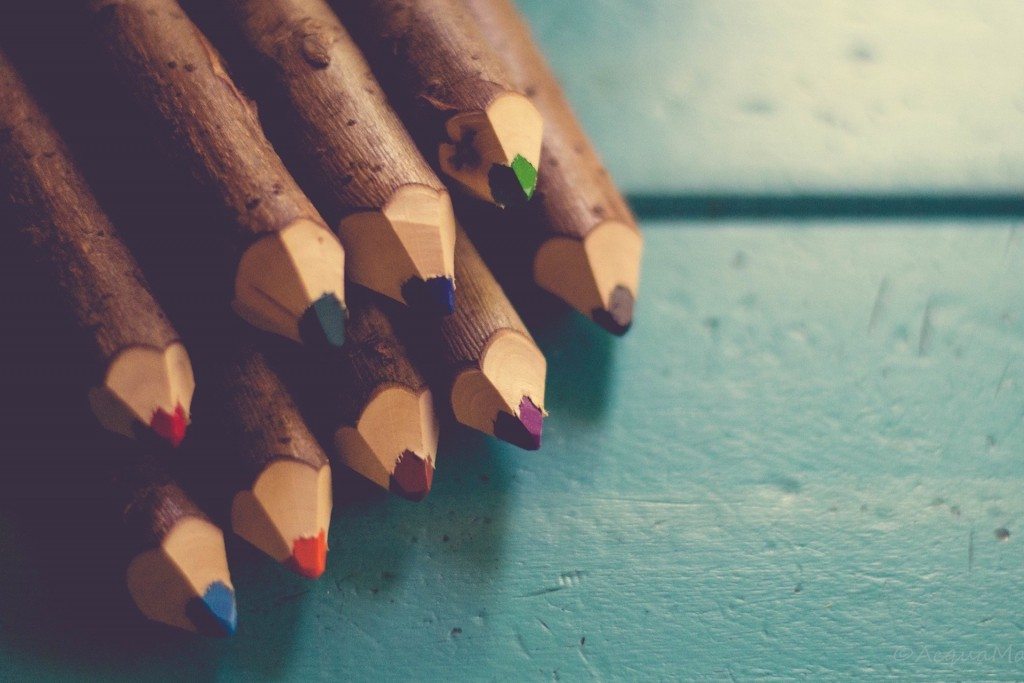I don’t know about you, but for me, plotting a full-length novel is one of the most difficult aspects of writing.
I tend to come up with a great premise, but turning that into a plot becomes a lot of work. I don’t usually get it right the first time, either.
Personally, what works best for me during this outlining process is to have plenty of visual material on hand. If I can see the story taking shape, I can make all sorts of subconscious connections that wouldn’t otherwise surface.
Here are 5 visual strategies I have used for outlining:
1. Picture File
Pictures are a great way to visualize your plot, setting, and characters. I find this works best in the very early planning stages, when your story is mostly just a bunch of thoughts roaming around your head.
You can keep either a digital file of pictures on your computer (taken yourself with a digital camera, or ones you find on the internet), or a real file with film pictures/magazine cutouts. Maybe you’ll even include pertinent or inspiring YouTube videos if you choose digital over print.
Whichever you use, make sure you hold onto them for when you start actually writing. You’ll need them for inspiration.
2. Writing Software
There are a few different types of writing software on the market, all of which help you organize your projects into bite-sized pieces for ease of writing and revising.
I use Scrivener, which is one of the best investments I’ve made for my writing, considering it was inexpensive and I use it every day. It took a bit of getting used to at first, but now I can’t imagine going back to writing in a regular word processor.
Whatever software you use, make sure you can save chapters and/or scenes as separate files, so during the outlining stage you can simply plug a few key words into each file as a sort of placeholder.
Scrivener also has a visual tool where you can see an excerpt of each chapter or scene on a series of digital index cards.
3. Index Cards
If you prefer more concrete methods of plotting to digital ones, try the good ol’ index card system.
It doesn’t get much cheaper or more simple than this.
You need a large pack of lined index cards, plus a photo album or small file box to keep the cards in order. On each card, write a short description of what action and/or characters a chapter/scene will need to include, and continue to do this until you have an skeleton for your story. You can doodle on the backs, paste on pictures, or add whatever you like. It’s also easy to shuffle them around, if need be.
When it’s time to begin writing, just keep your cards on hand for reference as you flesh out each section.
4. Whiteboard
On the t.v. series House, a medical team uses a whiteboard to brainstorm things that might be causing their patients’ dreadful illnesses.
A whiteboard is an excellent tool for the brainstorming stages of writing, because you can quickly jot down notes, or draw pictures and diagrams, then erase them at will (and start all over again, if necessary).
Of course, it’s not ideal for writing down information you wish to keep, unless you plan to transcribe your ideas onto paper, or your computer, later on. But, it’s still useful for helping envision ideas and see how you can make them fit together.
5. Timeline
I’ve always found it helpful to make a rough timeline of events that happen in my story. Making a list of plot points works too, but a timeline is simply visual representation of the same thing.
Using this strategy can help you quickly identify how the action of your story unfolds, and whether or not you need to rearrange, add, or omit certain events to improve flow.
Visualize Your Plot
Using any of these strategies, or other similar ones, during the outlining phase of your novel can help save you a lot of grief during the writing stages. You’ll more easily identify logic holes, make connections between events, spot opportunities to foreshadow, as well as keep your work organized.
Although these are great for planning novels, they can be adapted to writing non-fiction books and articles, too.
Which of these strategies have you used, or will you consider using in the future? What other visual strategies have you used to help plan your writing?
